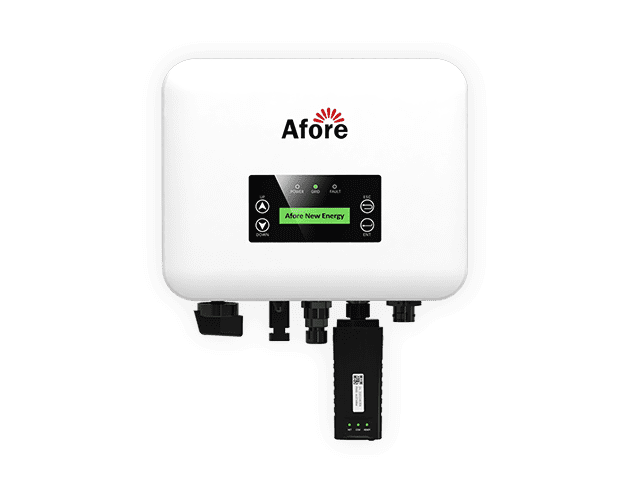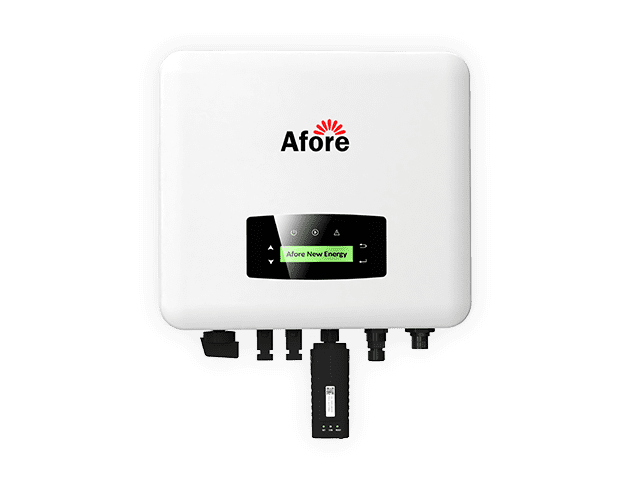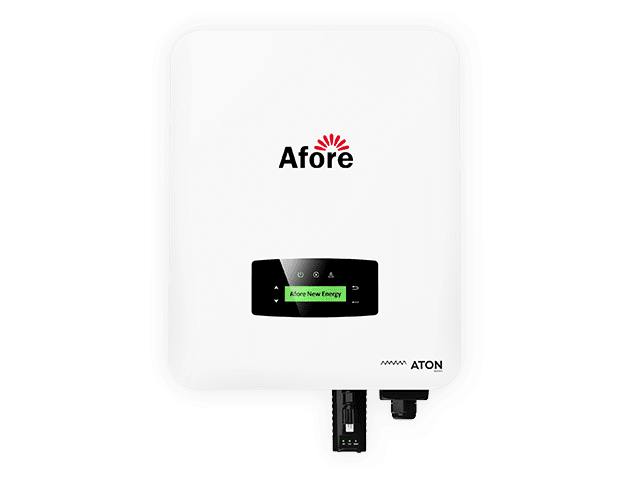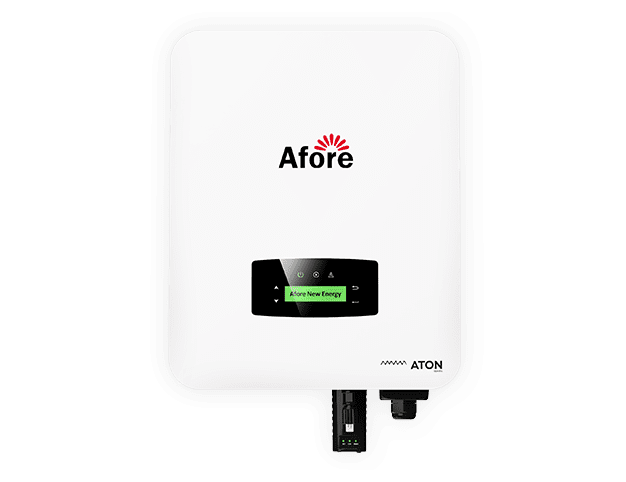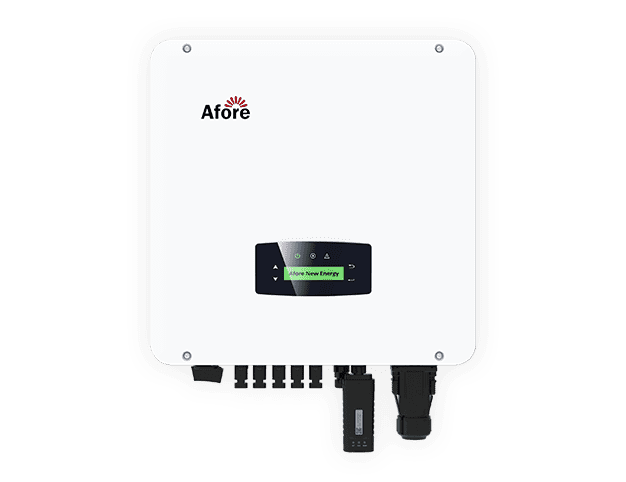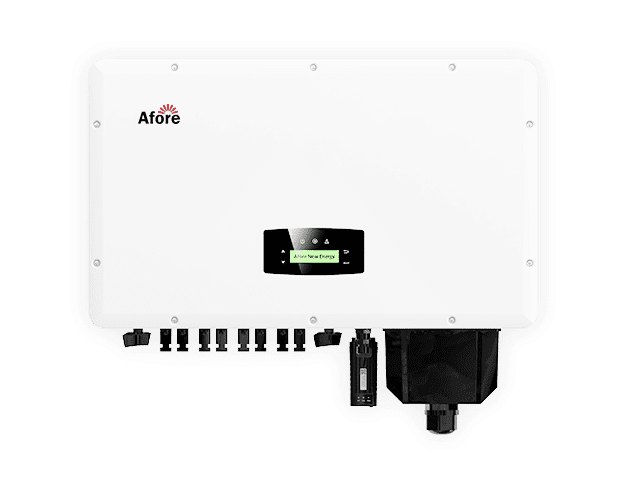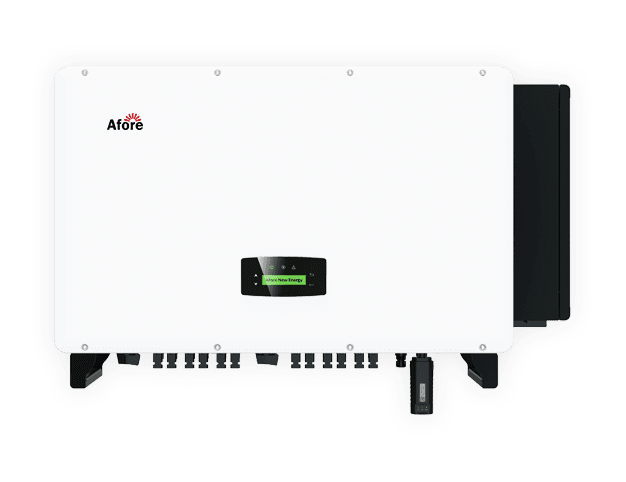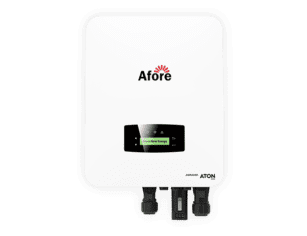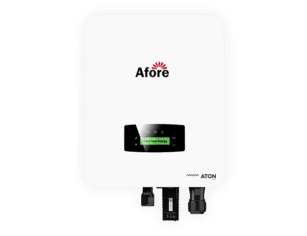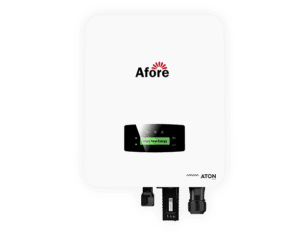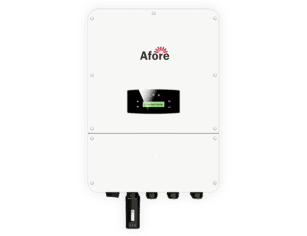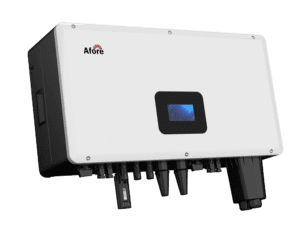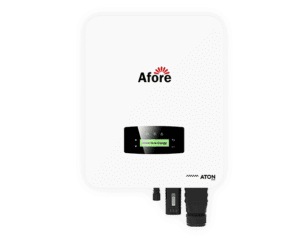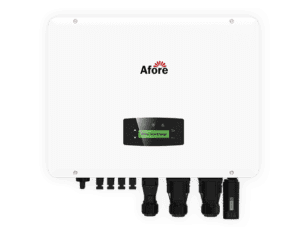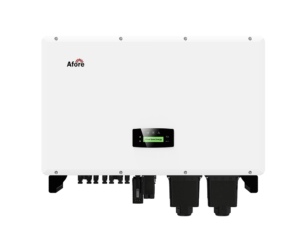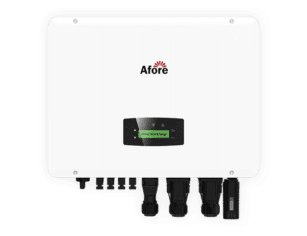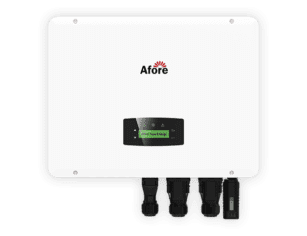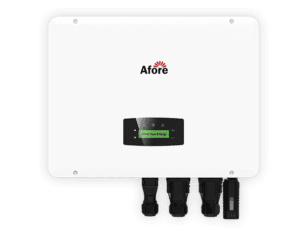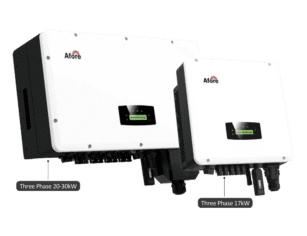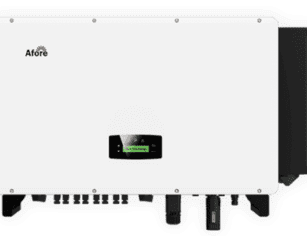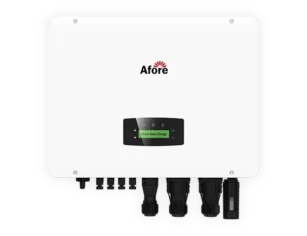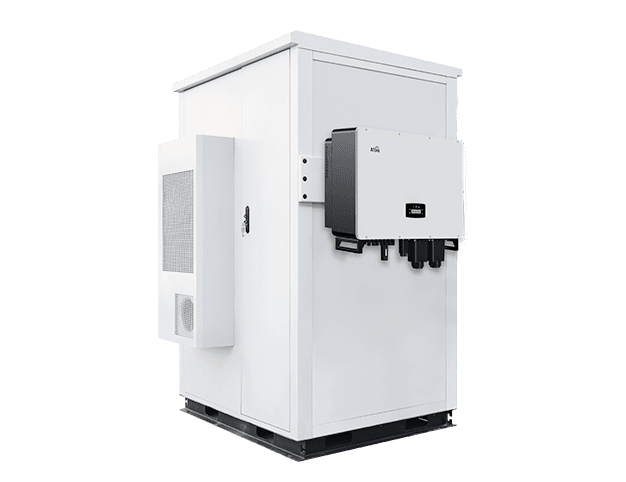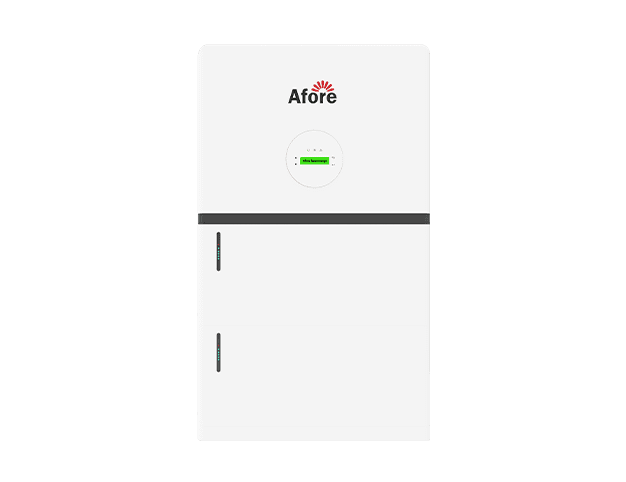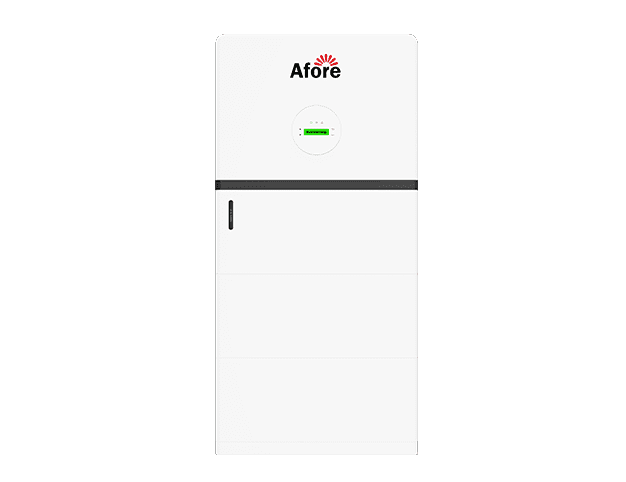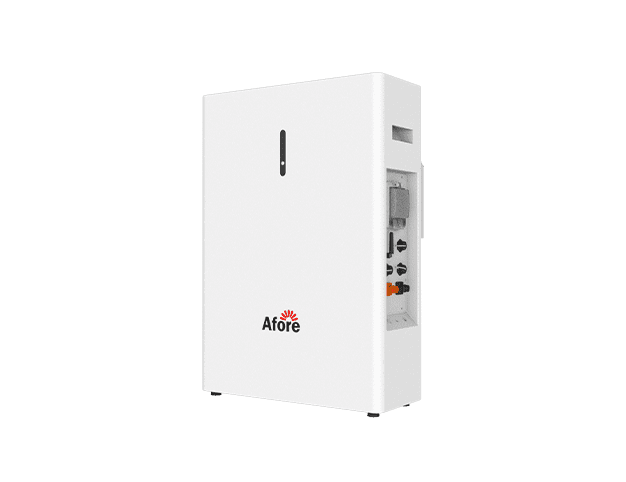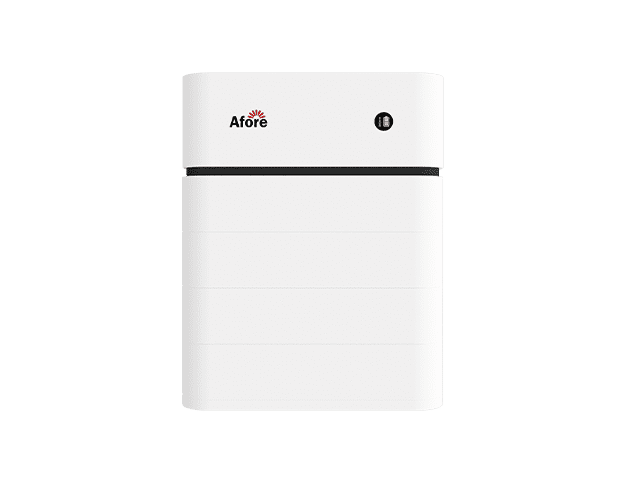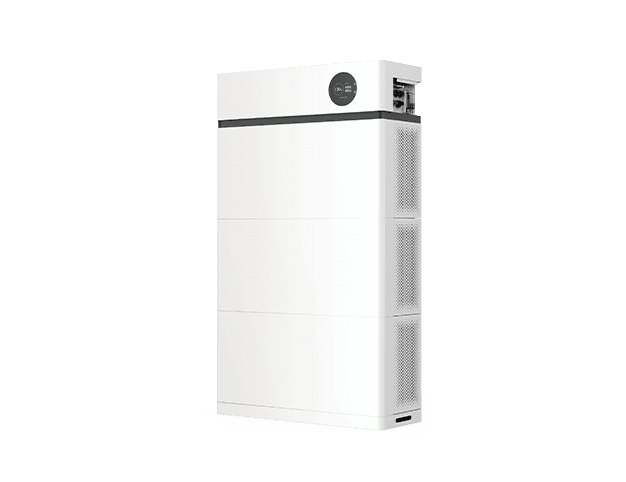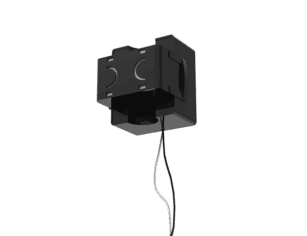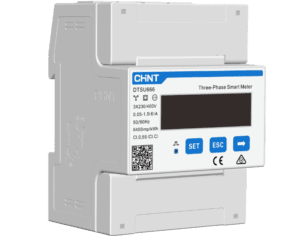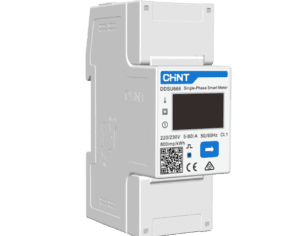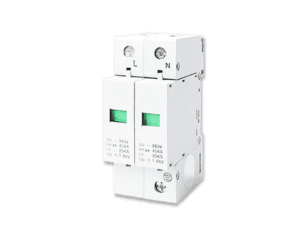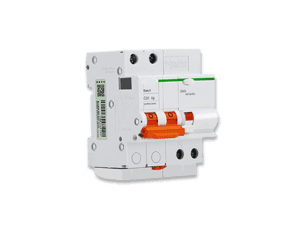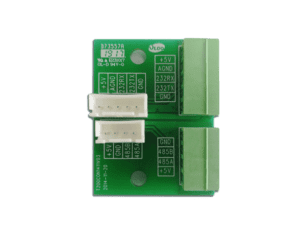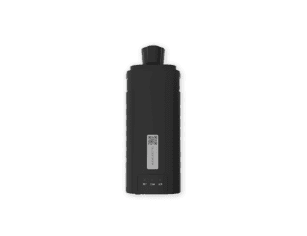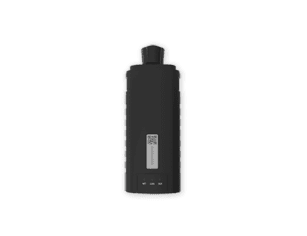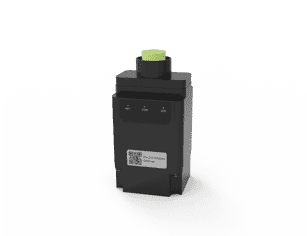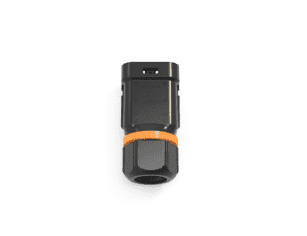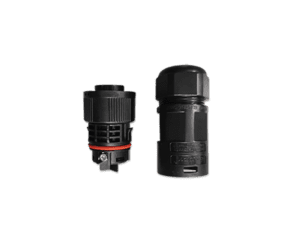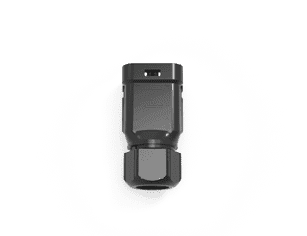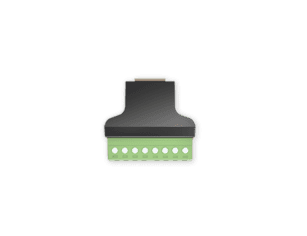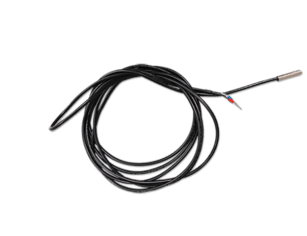Inversor autónomo: Guía definitiva de soluciones de energía aislada

Índice
En un mundo que valora cada vez más la independencia energética y la sostenibilidad, el inversor autónomo se ha convertido en una tecnología clave para la vida sin conexión a la red y los sistemas de energía remotos. Tanto si está construyendo una cabaña en la montaña como si está alimentando equipos agrícolas lejos de la red o preparando una solución de reserva para emergencias, es crucial que entienda cómo funciona un inversor autónomo y en qué se diferencia de un inversor solar o de un sistema híbrido. Esta guía aclara todo lo que necesita saber: cómo elegir el inversor adecuado, qué afecta a su rendimiento y cómo evitar errores costosos. Lo desglosaremos todo con explicaciones claras, ejemplos reales y opiniones respaldadas por expertos para ayudarle a tomar decisiones informadas y seguras en su camino hacia una energía fiable sin conexión a la red.
¿Qué es un inversor autónomo?
Definición y función principal
En un mundo en el que la independencia energética cobra cada día más valor, el inversor autónomo ha pasado a ocupar un lugar central. En esencia, un inversor autónomo es un dispositivo diseñado para convertir la electricidad de corriente continua (CC) -procedente normalmente de baterías, paneles solares u otros sistemas renovables- en corriente alterna (CA) que puedan utilizar sus electrodomésticos y herramientas.
Este tipo de inversor es diferente de su primo conectado a la red. Funciona independientemente de la red eléctrica, lo que significa que no depende de la red pública. Es ideal para lugares remotos, cabañas, casas rodantes o sistemas de respaldo de emergencia. Básicamente, cuando se desconecta de la red, su inversor autónomo es su nuevo mejor amigo.
Tipos de inversores autónomos
Hay que tener en cuenta algunas variedades de inversores autónomos:
- Inversores de onda sinusoidal pura: Producen una forma de onda limpia y suave que imita la de la red eléctrica. Son la mejor opción para hacer funcionar aparatos electrónicos sensibles y electrodomésticos de alta eficiencia.
- Inversores de onda sinusoidal modificada: Son más rentables, pero pueden no ser adecuados para determinados aparatos, como microondas o impresoras láser.
Además, es esencial distinguir los inversores autónomos de los conectados a la red y los híbridos:
- Inversores conectados a la red: Deben sincronizarse con la red eléctrica y apagarse durante los cortes (anti-islanding).
- Inversores híbridos: Combinan características de los sistemas conectados a la red y autónomos, ofreciendo más flexibilidad para el almacenamiento y el uso de la energía.

¿Puede funcionar solo un inversor?
Autónomo frente a conectado a la red
Es una pregunta habitual: ¿puede un inversor funcionar completamente solo? La respuesta depende de cómo defina "solo". Aunque el término inversor autónomo implica independencia, no significa que el inversor funcione sin ningún componente de apoyo. Significa que el sistema funciona sin depender de la red eléctrica. A diferencia de los inversores conectados a la red, que se sincronizan con el suministro eléctrico principal y se desconectan durante los cortes por motivos de seguridad, los inversores autónomos están diseñados para funcionar sin conexión a la red. Siguen suministrando energía a las cargas conectadas mientras reciban energía de una fuente de CC, como baterías cargadas por paneles solares.
Esta distinción es importante para los propietarios de viviendas, los usuarios de vehículos recreativos y las empresas rurales que evalúan sistemas de energía de reserva o primarios. Los inversores conectados a la red son muy eficientes, pero inútiles en caso de apagón. Los inversores autónomos, en cambio, brillan en lugares remotos o durante emergencias. Están diseñados para ser independientes y autosuficientes, convirtiendo la energía almacenada en energía utilizable incluso cuando el resto del vecindario está a oscuras.
Componentes necesarios para el funcionamiento autónomo
Aunque el inversor autónomo es fundamental en cualquier sistema de energía sin conexión a la red, no funciona de forma aislada. Necesita varios componentes de apoyo para formar una solución energética completa y funcional. Esto es lo que incluye una configuración básica:
- Fuente de corriente continua: Lo más habitual es un conjunto de paneles solares, aunque los generadores y los sistemas microhidráulicos también pueden desempeñar esta función. Se prefiere la energía solar por su sostenibilidad y ahorro a largo plazo.
- Regulador de carga: Regula la tensión y la corriente procedentes del panel solar en el banco de baterías. Los reguladores de carga MPPT (seguimiento del punto de máxima potencia) son muy eficientes y se utilizan habitualmente.
- Banco de baterías: Almacena la energía recogida de la fuente de alimentación de CC. Esto permite disponer de energía de forma constante, incluso cuando no brilla el sol.
- Inversor autónomo: El corazón del sistema. Convierte la energía de CC almacenada en energía de CA que pueden utilizar los electrodomésticos, las herramientas y la iluminación.
Cada componente debe tener el tamaño adecuado y seleccionarse en función de los patrones de consumo energético, las horas de uso y los picos de carga. Por ejemplo, si el inversor no está dimensionado para que la cafetera de la mañana y la bomba de agua se pongan en marcha al mismo tiempo, es posible que se produzcan paradas del sistema o averías en los equipos. Una planificación adecuada y unos componentes de calidad son la clave para maximizar la vida útil y la eficiencia de su instalación autónoma de inversores.
Lo más importante es que el inversor se adapte a la tensión de la batería y a la carga total prevista. En aplicaciones no conectadas a la red, es preferible sobredimensionar ligeramente el inversor para tener en cuenta las sobrecorrientes y los picos de consumo inesperados. Cuando se integra correctamente, todo el sistema funciona como una fuente de energía fiable y autosuficiente, independiente de las redes públicas y de los crecientes costes de la energía.
Un sistema inversor autónomo funcional incluye:
- Paneles solares (u otra fuente de corriente continua)
- Controlador de carga
- Banco de baterías
- El propio inversor autónomo
Estos componentes trabajan juntos para recoger la energía solar, almacenarla y convertirla en electricidad utilizable. El inversor es el eje que garantiza un suministro de energía fluido y seguro.
Integración de la energía solar con inversores autónomos ("Solar Inverter")
Diferencias entre inversores de conexión a red
Al hablar de un inversor autónomo, es importante entender en qué se diferencia de un inversor solar, sobre todo teniendo en cuenta que ambos términos suelen utilizarse indistintamente por error. Aunque ambos tipos sirven para convertir la electricidad CC en CA, su diseño, propósito y funcionalidad difieren significativamente.
Los inversores solares suelen asociarse a sistemas conectados a la red eléctrica. Estos dispositivos están diseñados para funcionar con paneles fotovoltaicos (FV) y suelen incluir funciones como el seguimiento del punto de máxima potencia (MPPT) para optimizar la producción de los módulos solares en condiciones meteorológicas cambiantes. Y lo que es más importante, la mayoría de los inversores solares conectados a la red están obligados por ley a desconectarse durante los cortes de energía para evitar la retroalimentación de electricidad a la red, una medida de seguridad conocida como anti-islanding.
En cambio, un inversor autónomo está diseñado específicamente para su uso sin conexión a la red. No se conecta a la infraestructura de la red ni depende de ella. En su lugar, extrae la energía de CC de las baterías (que pueden cargarse con paneles solares) y suministra corriente alterna a las cargas, incluso durante los apagones. Estos inversores suelen carecer de mecanismos anti-isla, lo que es una ventaja en zonas remotas donde no hay acceso a la red.
Otra diferencia clave radica en el control del sistema. Mientras que los inversores solares suelen dar prioridad a la inyección del exceso de potencia a la red, los inversores autónomos se centran en el consumo local y el almacenamiento. Sus configuraciones priorizan la autonomía y la fiabilidad sobre la eficiencia de exportación.
Por tanto, aunque ambos funcionan con energía solar, un inversor autónomo está diseñado para ser totalmente independiente, mientras que un inversor solar, al menos en el sentido tradicional de conexión a la red, no lo es.
Soluciones de inversores híbridos
A medida que evoluciona la tecnología, la línea que separa los inversores solares de los inversores autónomos sigue difuminándose, especialmente con el auge de los sistemas de inversores híbridos. Un inversor híbrido combina las ventajas de la energía solar, el almacenamiento en baterías y, en ocasiones, la conectividad a la red en una única unidad integrada. Estos sistemas son capaces de funcionar tanto conectados a la red como aislados de ella, ofreciendo a los usuarios lo mejor de ambos mundos.
Inversores híbridos también destacan en la gestión inteligente de la energía. Muchos incluyen algoritmos basados en inteligencia artificial que ajustan los flujos de energía en función de los hábitos de consumo, las tarifas de los servicios públicos y las previsiones meteorológicas. Esto significa que los usuarios pueden reducir sus facturas de energía, reducir la dependencia de la red y mantener energía de reserva durante los cortes.
Sin embargo, no todos los sistemas híbridos son iguales. Es esencial comprobar las especificaciones clave, como la compatibilidad con MPPT, la compatibilidad del voltaje de la batería, los valores nominales de sobretensión y la fiabilidad del software. Busca fabricantes de confianza con un historial de sistemas duraderos y útiles.
Eficacia y rendimiento
Tanto si utiliza un inversor solar, un inversor autónomo o un modelo híbrido, la eficiencia del sistema es fundamental para maximizar la rentabilidad de la inversión y garantizar el rendimiento a largo plazo. Desglosemos los factores que influyen en la eficiencia del inversor en condiciones reales.
- Eficiencia de conversión
Inversores autónomos de alta calidad de marcas como Antes de presentan unos índices de eficiencia de 95%-99%. Esto significa que se pierde muy poca energía durante el proceso de conversión de CC a CA. Compruebe siempre las cifras de eficiencia pico y nominal del inversor: le permitirán saber cómo funciona la unidad en diferentes condiciones de carga.
- Gestión térmica
Los inversores generan calor durante su funcionamiento. Sin una regulación térmica adecuada, la eficiencia puede disminuir considerablemente. Las unidades con refrigeración activa (ventiladores) o refrigeración pasiva (disipadores) tienden a funcionar mejor en entornos calurosos. Las carcasas con clasificación IP66 son ideales para climas polvorientos o húmedos.
- Adaptación de la carga
La capacidad nominal de un inversor debe ajustarse a su demanda real de energía. Los inversores demasiado grandes pueden consumir más energía en reposo, mientras que los demasiado pequeños pueden sobrecargarse o fallar prematuramente. Adaptar la carga al tamaño del inversor garantiza un rendimiento óptimo y la estabilidad del sistema.
- Estabilidad de la tensión de entrada
Un suministro de CC constante y de alta calidad, normalmente mantenido mediante reguladores de carga MPPT, es esencial para una salida constante del inversor. Si el voltaje de la matriz solar o de la batería fluctúa demasiado, el inversor puede funcionar de forma ineficiente o apagarse por completo.
- Factores medioambientales
La ubicación es importante. Los inversores expuestos a la luz solar directa o a la humedad sin la protección adecuada se degradan más rápido. Por eso muchos sistemas modernos vienen con carcasas resistentes a la intemperie y una monitorización inteligente para alertar a los usuarios de cualquier anomalía.
En resumen, el inversor autónomo no se limita a cortar el cable de la red, sino que se trata de construir un sistema energético inteligente, eficiente y resistente que se adapte a su estilo de vida y a su entorno.
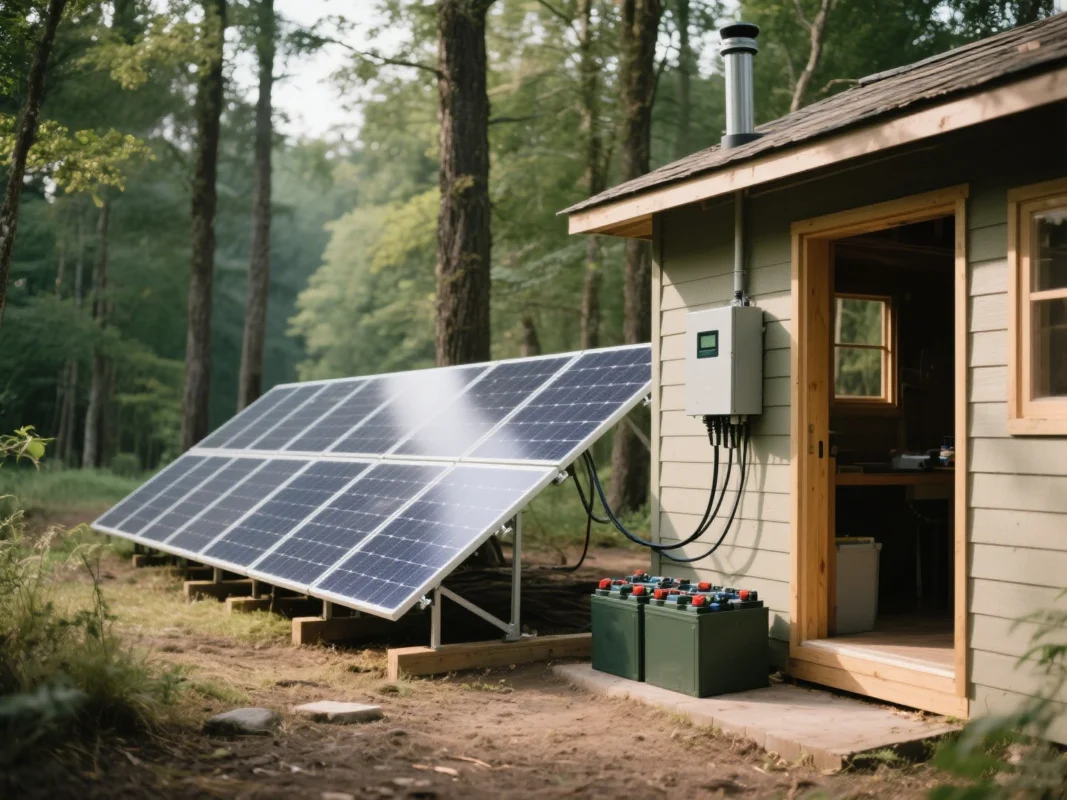
Qué evitar al enchufar un inversor
Saber qué no conectar a su sistema es tan importante como elegir el inversor autónomo adecuado. Aunque estos dispositivos están diseñados para alimentar su vida sin conexión a la red, hay limitaciones importantes que debe tener en cuenta, especialmente cuando se trata de aparatos que consumen mucha energía o de electrónica sensible. Un uso incorrecto del inversor puede provocar un uso ineficiente de la energía, daños en los equipos o incluso un fallo completo del sistema.
Veamos qué cosas no debe conectar a su inversor autónomo y por qué.
Altas cargas de sobretensión
No todos los aparatos consumen la misma cantidad de energía de forma constante. Algunos aparatos, especialmente los que tienen motores o compresores, requieren una gran cantidad de corriente durante el arranque, lo que se conoce como sobrecarga o corriente de arranque. Esta sobrecarga puede ser varias veces superior a la potencia en vatios de funcionamiento normal del aparato, y si su inversor autónomo no está preparado para soportar ese pico, podría desconectar el sistema o dañar el inversor.
Entre los dispositivos comunes de alta sobretensión se incluyen:
- Frigoríficos y congeladores
- Aire acondicionado
- Bombas de agua y bombas de sumidero
- Herramientas eléctricas (por ejemplo, amoladoras angulares, sierras circulares)
- Microondas y placas de inducción
Por ejemplo, un frigorífico que funciona a 150 vatios puede necesitar más de 1.000 vatios sólo para encenderse. Si su inversor no puede soportar esa breve sobretensión, podría apagarse por completo o sobrecalentarse. Esto es especialmente cierto en el caso de los inversores de onda sinusoidal antiguos o modificados, que son menos tolerantes bajo tensión.
Para evitar estos problemas:
- Elija un inversor autónomo de onda sinusoidal pura con una alta capacidad de sobretensión (a menudo el doble de la potencia continua nominal).
- Escalona el uso de aparatos de alta potencia en lugar de ponerlos en marcha todos a la vez.
- Considere la posibilidad de utilizar aparatos de "arranque suave" o compatibles con el inversor con una corriente de irrupción más baja.
Es esencial dimensionar correctamente el sistema. Uno de los errores más comunes en las instalaciones aisladas es no dimensionar bien el sistema.
Electrónica sensible con onda sinusoidal modificada
Aunque los inversores de onda sinusoidal modificada son económicos, no son la mejor opción para todos los aparatos, especialmente los electrónicos sensibles. La forma de onda que producen es más entrecortada y menos consistente que la curva limpia y suave generada por una onda sinusoidal pura. Como resultado, algunos aparatos pueden funcionar de forma errática, generar calor excesivo o simplemente no funcionar.
Los dispositivos especialmente vulnerables son:
- Ordenadores portátiles y de sobremesa (especialmente aquellos con fuentes de alimentación de alta eficiencia)
- Equipos médicos (como máquinas CPAP)
- Televisores LED y dispositivos inteligentes
- Impresoras láser
- Equipo de audio/vídeo (amplificadores, monitores de estudio)
Enchufar este tipo de aparatos electrónicos a un inversor autónomo de onda sinusoidal modificada puede provocar zumbidos, parpadeos de la pantalla, acortar la vida útil del aparato o un mal funcionamiento completo. En el peor de los casos, puede anular la garantía del fabricante.
A continuación te explicamos cómo proteger tu sistema y tus dispositivos:
- Utilice siempre un inversor de onda sinusoidal pura para la electrónica o cualquier cosa con microprocesador.
- Comprueba las directrices del fabricante: muchos aparatos especifican "sólo onda sinusoidal" en su documentación.
- En caso de duda, pruebe el aparato en una regleta de alimentación de reserva antes de utilizar el inversor.
Invertir por adelantado en el tipo adecuado de inversor puede ahorrarle con el tiempo cientos (si no miles) de dólares en componentes electrónicos de repuesto.
¿Qué afecta al rendimiento de un inversor autónomo?
Incluso el mejor inversor autónomo sólo funcionará tan bien como lo permitan las condiciones que lo rodean. Tanto si está alimentando una cabaña aislada como una furgoneta solar o una explotación agrícola remota, hay varios factores críticos que influyen en la eficiencia y fiabilidad con la que su inversor convertirá la energía a lo largo del tiempo.
Comprender estas variables de rendimiento no es sólo cuestión de maximizar el tiempo de funcionamiento, sino también de prolongar la vida útil de su sistema y garantizar que su inversión en energía le proporcione rendimientos fiables.
Condiciones medioambientales
Dónde y cómo se instala su inversor autónomo desempeña un papel fundamental en su rendimiento a largo plazo. Estos dispositivos son sensibles a los factores ambientales, especialmente cuando se instalan al aire libre o en espacios no acondicionados como cobertizos o garajes.
Las temperaturas extremas pueden provocar estrés térmico. Un calor elevado puede provocar un derrateo (reducción automática de la potencia para evitar el sobrecalentamiento), mientras que las bajas temperaturas pueden perjudicar el rendimiento de la batería y, a su vez, el comportamiento del inversor. Las unidades que carecen de una ventilación adecuada o de mecanismos de refrigeración interna suelen tener un rendimiento inferior o apagarse prematuramente.
La humedad y el polvo también son problemas graves. En las zonas costeras, el aire cargado de sal puede corroer las placas de circuitos si el inversor no está bien sellado. En regiones agrícolas o polvorientas, la acumulación de partículas puede obstruir los sistemas de ventilación y aumentar el riesgo de sobrecalentamiento o fallo eléctrico.
Para mitigar estos riesgos:
- Elija un inversor con una clasificación IP alta (como IP65 o IP66) para que sea resistente al agua y al polvo.
- Monte el inversor en un lugar sombreado y bien ventilado.
- Evite la exposición directa al sol siempre que sea posible: la acumulación de calor puede reducir drásticamente la eficacia de la producción.
- Limpie las rejillas de ventilación y los filtros con regularidad si está instalado en entornos polvorientos.
Adaptación a la carga y eficiencia
Otro factor crucial que influye en el rendimiento del inversor autónomo es su adecuación a la demanda de potencia del sistema. Una mala adaptación de la carga provoca ineficiencia, ciclos excesivos e incluso posibles daños en el hardware.
El problema es el siguiente: si su inversor es demasiado pequeño para sus necesidades energéticas, tendrá dificultades para satisfacer la demanda durante los picos de uso, lo que provocará paradas o sobrecalentamientos. Por otro lado, un inversor sobredimensionado consume más potencia en modo de reposo, lo que desperdicia una valiosa energía, especialmente en instalaciones solares en las que cada vatio es importante.
Ejemplo real: Un usuario instala un inversor de 5000 W para hacer funcionar aparatos que rara vez superan los 300 W. Esa capacidad extra no se queda ahí, sino que consume corriente constantemente, agotando las baterías de forma innecesaria.
Para optimizar la eficacia:
- Realice un análisis exhaustivo de la carga antes de diseñar el sistema.
- Adapte la potencia nominal continua del inversor a su carga media y la potencia nominal de sobretensión a su aparato más grande.
- Ten en cuenta la ampliación: si tienes previsto añadir cargas en el futuro (por ejemplo, un frigorífico o un cargador para vehículos eléctricos), tenlo en cuenta a la hora de calcular el tamaño.
Muchos inversores autónomos modernos también incluyen modos de reposo o ecológicos que reducen el consumo de energía durante los periodos de carga baja, preservando la vida útil de la batería y aumentando la eficiencia general del sistema.
Calidad de la fuente (alimentación CC)
Un factor que suele pasarse por alto y que afecta al rendimiento del inversor es la calidad y estabilidad de la fuente de alimentación de CC, normalmente el banco de baterías o el campo solar. El hecho de disponer de suficiente energía no significa que se suministre correctamente.
Un voltaje inconsistente procedente de baterías parcialmente cargadas o de paneles solares mal cableados puede hacer que su inversor funcione de forma errática. Una entrada de baja tensión puede activar alarmas de subtensión, reducir la eficiencia o apagar el sistema por completo.
Algunos puntos clave a tener en cuenta:
- Asegúrese de que los cables de la batería tengan el tamaño adecuado y estén bien conectados para reducir la caída de tensión.
- Utiliza un regulador de carga MPPT para estabilizar la entrada solar y maximizar la salida en condiciones variables de luz solar.
- Elija baterías de alta calidad con sistemas de gestión de baterías (BMS) integrados que se comunican con el inversor y ayudan a regular el comportamiento de carga/descarga.
Los paneles solares expuestos a sombreado parcial, strings desajustados o inclinación inadecuada también pueden comprometer la calidad de la entrada de CC. Por este motivo, la integración del inversor de conexión a red debe planificarse cuidadosamente en los sistemas autónomos, ya que cualquier deficiencia que se produzca aguas arriba repercutirá en el rendimiento del inversor.
En resumen, una entrada de CC limpia y constante es la base de una salida de CA fiable. Cuanto mejor sea su fuente de alimentación, más podrá trabajar su inversor autónomo de forma segura y eficiente.
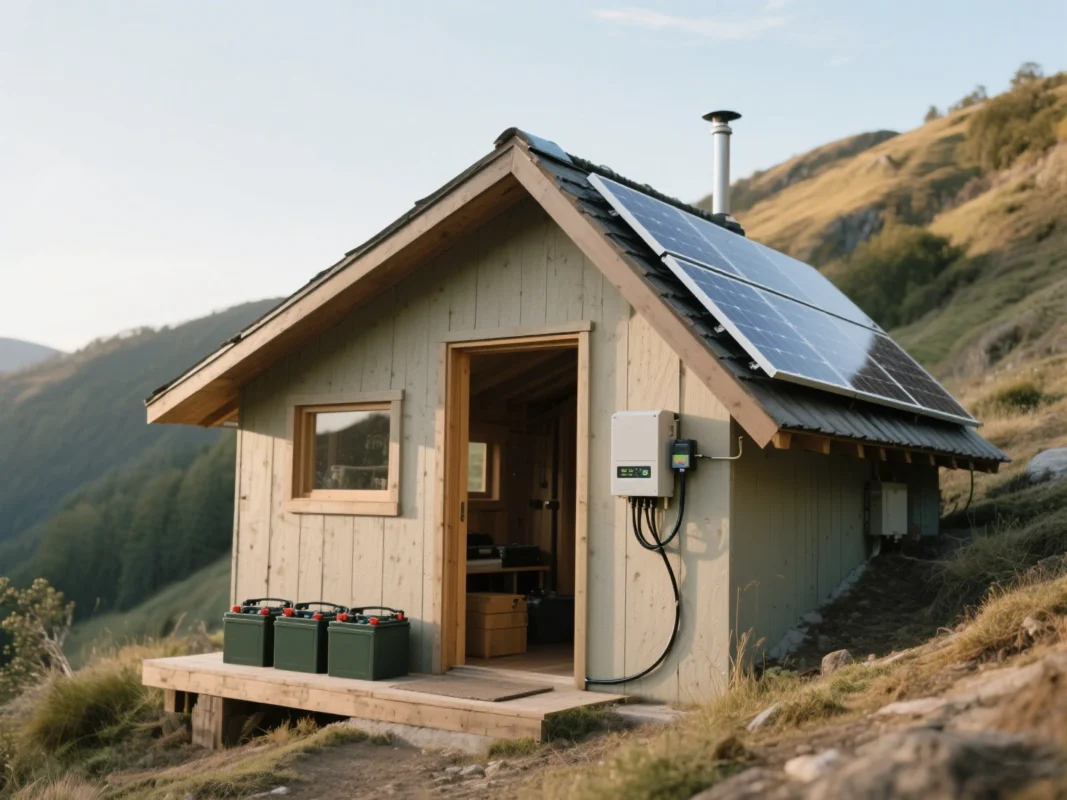
Diseño de un sistema eléctrico aislado con inversores autónomos
Crear un sistema de energía fiable sin conexión a la red es algo más que comprar unos cuantos paneles solares y conectar un inversor autónomo. Se trata de una solución cuidadosamente diseñada que equilibra la generación, el almacenamiento y el uso de la energía para garantizar un suministro ininterrumpido, día y noche, llueva o haga sol.
Tanto si está construyendo una cabaña remota, una furgoneta solar móvil o un sistema de respaldo para cortes de red, el rendimiento de toda la configuración depende de un diseño bien pensado. Repasemos los aspectos esenciales del diseño de un sistema aislado eficiente y escalable centrado en un inversor autónomo de alta calidad.
Descripción general de los componentes del sistema
Un sistema aislado eficaz no se basa en un único dispositivo, sino en una red de componentes que funcionan juntos a la perfección. Estos son los componentes básicos que necesitarás:
- Paneles solares (módulos FV)
Captan la luz solar y la convierten en corriente continua. La potencia de los paneles, su ubicación y su ángulo influyen directamente en la cantidad de energía que generan a lo largo del año.
- Regulador de carga MPPT
De este modo se regula la tensión y la corriente que llega del panel solar a las baterías. La tecnología MPPT (seguimiento del punto de máxima potencia) maximiza la captación de energía ajustándose a las condiciones ambientales en tiempo real.
- Banco de baterías
Así se almacena energía para utilizarla durante la noche o en días nublados. Las baterías de iones de litio son cada vez más populares por su larga vida útil y su capacidad de carga rápida, pero en muchos sistemas se siguen utilizando las de plomo-ácido.
- Inversor autónomo
El corazón del sistema aislado. Convierte la electricidad de CC de las baterías en energía de CA utilizable para su hogar o sus dispositivos. Elige un inversor con potencia y capacidad de sobretensión suficientes para soportar la carga máxima prevista.
- Generador opcional (de reserva)
En zonas con exposición solar limitada o para situaciones de alta demanda, un generador de reserva puede complementar la energía y recargar las baterías cuando sea necesario.
- Sistema de vigilancia
Las pantallas inteligentes o las aplicaciones móviles ayudan a controlar el rendimiento, señalar fallos y gestionar cargas a distancia. Muchos inversores autónomos modernos incorporan herramientas de monitorización o módulos Bluetooth/Wi-Fi.
Cada uno de estos componentes debe seleccionarse teniendo en cuenta la compatibilidad, escalabilidad y fiabilidad. Saltarse la calidad en cualquier fase puede limitar el rendimiento de todo el sistema.
Dimensionar el sistema
Uno de los errores más comunes en el diseño de sistemas aislados es un dimensionado inadecuado. Un cálculo excesivo conlleva derroches y costes innecesarios, mientras que un cálculo insuficiente provoca cortes frecuentes y sobrecargas del inversor. Su inversor autónomo debe ajustarse con precisión a su consumo energético diario y a sus requisitos de carga máxima.
Planteamiento paso a paso del dimensionamiento del sistema:
- Estimación del consumo energético diario
Haz una lista de todos los aparatos que piensas utilizar, su potencia en vatios y el tiempo de uso diario. Multiplica los vatios × horas de cada aparato y suma el total para obtener tu consumo diario de vatios-hora.
- Determinar el almacenamiento en batería
Decide cuántos días de autonomía necesitas (normalmente, de 1 a 3 días para la reserva meteorológica). Multiplica tu uso diario por el número de días para obtener la capacidad mínima de la batería.
- Calcular el tamaño del campo solar
Divide tus necesidades diarias de vatios-hora por la media de horas de sol al día en tu región. Así obtendrás la potencia mínima que deben generar tus paneles solares.
- Elija el inversor adecuado
Su inversor autónomo debe gestionar su carga máxima con un búfer -idealmente 20-30% por encima de su máximo previsto- para acomodar las sobrecargas y el crecimiento futuro.
- Pérdidas de eficiencia
Las pérdidas del sistema debidas al calor, la resistencia de los cables y la ineficacia de los componentes suelen reducir la eficacia global en 10-20%. Siempre hay que sobredimensionar ligeramente para compensar.
Por ejemplo:
Si su consumo diario total es de 3.000 Wh, puede elegir un campo solar de 4.000 Wh, 12 kWh de almacenamiento en baterías y un inversor autónomo de onda sinusoidal pura de 3.500 W con una potencia nominal de sobretensión de 7.000 W.
Mantenimiento y buenas prácticas
Prácticas óptimas de instalación
Una instalación adecuada puede prolongar considerablemente la vida útil de su inversor. Entre los consejos se incluyen:
- Montar en zonas bien ventiladas y a la sombra
- Evitar los ambientes húmedos o polvorientos
- Utilice cableado y conectores certificados
Gestión de la carga
Ser estratégico con lo que se alimenta puede evitar sobrecargas. Reparte las cargas pesadas y evita ponerlo todo en marcha a la vez.
Instale electrodomésticos de bajo consumo para reducir la carga de su sistema.
Control y diagnóstico
Muchos inversores autónomos vienen ahora con conectividad Bluetooth o Wi-Fi. Es posible:
- Seguimiento del consumo de energía
- Alertas de sobrecarga o batería baja
- Ajustes de control remoto
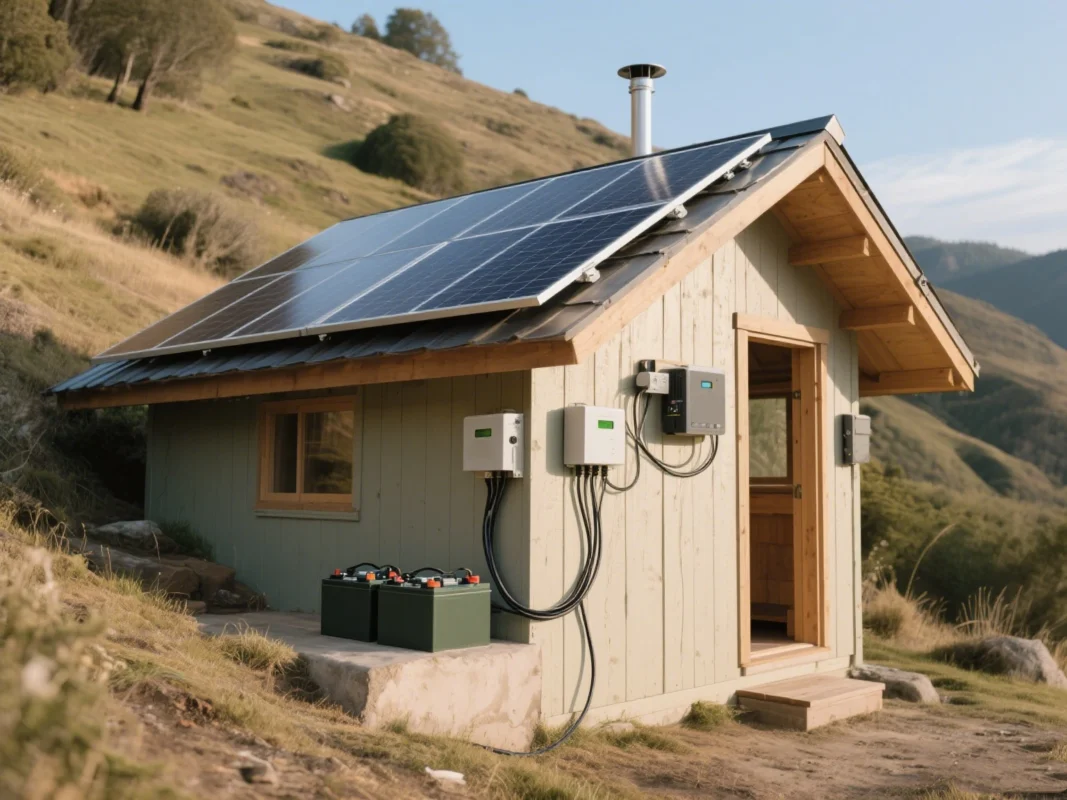
Preguntas frecuentes
1. ¿Qué es un inversor autónomo?
Un inversor autónomo es un dispositivo que convierte la electricidad de corriente continua (CC) procedente de fuentes como baterías o paneles solares en electricidad de corriente alterna (CA) para alimentar electrodomésticos o herramientas. A diferencia de los inversores conectados a la red, los inversores autónomos funcionan de forma independiente sin depender de la red eléctrica, por lo que son esenciales para los sistemas aislados o de reserva de energía. Están diseñados para gestionar la entrada fluctuante de baterías o fuentes renovables y suministrar CA constante y utilizable allí donde no haya acceso a la red.
2. ¿Puede funcionar solo un inversor?
Técnicamente, un inversor no puede funcionar completamente solo. Aunque un inversor autónomo funciona independientemente de la red, sigue necesitando una fuente de alimentación de CC estable, como un banco de baterías o un huerto solar. Sin un suministro de energía adecuado, el inversor no puede producir CA. Además, se necesitan otros componentes, como reguladores de carga y un cableado adecuado, para crear un sistema aislado funcional. Así pues, el inversor es una parte fundamental del sistema, pero debe integrarse con elementos de apoyo para funcionar eficazmente.
3. ¿Qué no debe conectarse a un inversor?
Ciertos aparatos son problemáticos cuando se conectan a un inversor, especialmente los de onda sinusoidal modificada o las unidades de tamaño insuficiente. Evite enchufarlos:
- Electrodomésticos con cargas de sobretensión elevadas (por ejemplo, frigoríficos, aparatos de aire acondicionado, bombas).
- Dispositivos electrónicos sensibles como aparatos médicos, ordenadores portátiles e impresoras láser en inversores de onda sinusoidal modificada.
- Dispositivos que requieren alimentación de onda sinusoidal pura para funcionar correctamente
Enchufarlos puede provocar paradas del inversor, daños o un mal funcionamiento del aparato. Para evitar problemas, utilice un inversor autónomo de onda sinusoidal pura para cargas sensibles y asegúrese de que la capacidad de sobretensión del inversor se adapte a las corrientes de arranque de los aparatos pesados.
4. ¿Qué afecta al rendimiento de un inversor autónomo?
Múltiples factores influyen en el rendimiento del inversor, entre ellos:
- Condiciones ambientales: Las temperaturas extremas, el polvo y la humedad pueden reducir la eficiencia o provocar paradas.
- Adaptación a la carga: el uso de un inversor con el tamaño adecuado a su demanda real de energía garantiza una eficiencia y longevidad óptimas.
- Calidad de la fuente: Una entrada de CC estable y limpia procedente de baterías o paneles solares en buen estado es crucial para un funcionamiento fiable.
Si se tienen en cuenta estos factores mediante una instalación, un mantenimiento y un diseño del sistema adecuados, se maximizará la producción y la vida útil del inversor.
5. 5. ¿En qué se diferencia un inversor solar de un inversor autónomo?
Un inversor solar convierte específicamente la corriente continua generada por los paneles solares en corriente alterna y suele incluir funciones como el seguimiento del punto de máxima potencia (MPPT) para optimizar la captación de energía. Aunque todos los inversores solares convierten la CC en CA, algunos están diseñados para conectarse a la red, devolviendo el exceso de energía a la red pública. En cambio, un inversor autónomo funciona independientemente de la red y suele gestionar la energía de las baterías cargadas por la energía solar u otras fuentes. Algunos inversores modernos combinan ambas funciones como unidades híbridas, uniendo sin problemas la energía solar, la de las baterías y la de la red.




